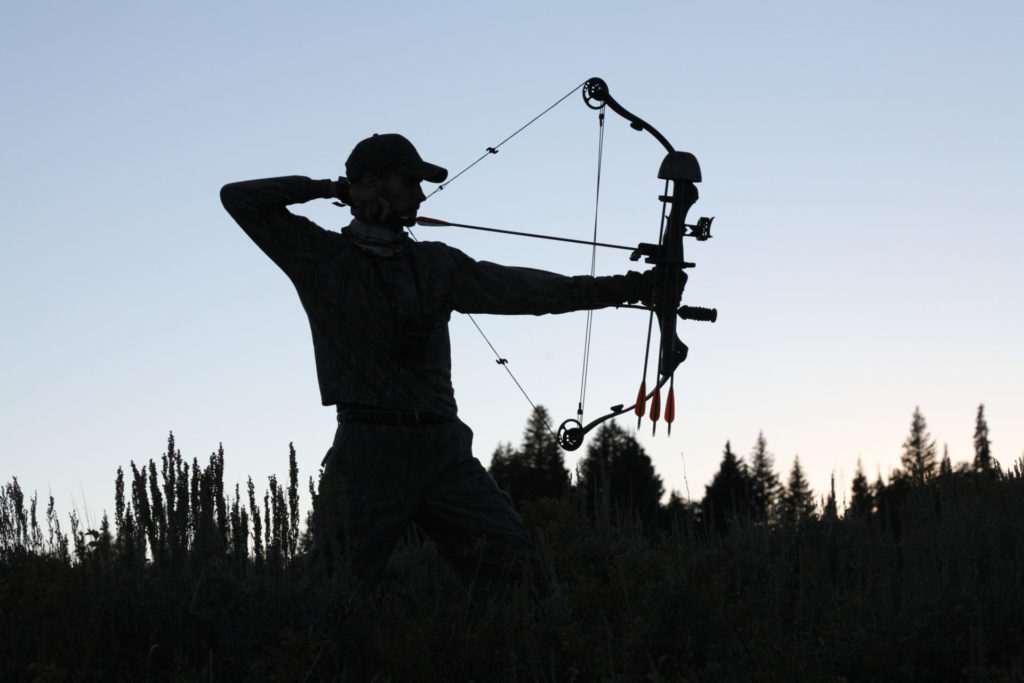I get asked all the time, “What does a stabilizer do to my bow?”
Advertisement
Well, the first thing it does is stop the bow from jumping around in your hand. The more weight you add, the less it jumps around. Secondly, it helps the bow fall or react the same during and after the shot. A stabilizer should be used to balance the bow. Finally, it also absorbs vibration – the more mass you add to the bow, the more vibration is absorbed in that mass rather than into your hand. Today’s bows are so smooth that this issue is the least important. You can also add that it makes your bow look cool. A nice stabilizer does finish off the bow to make it look “high tech.”

Most hunters don’t need to worry as much about balance, and that’s why hunters generally don’t put side bar stabilizers on their bows. Now, I do see a lot of the more serious hunters, especially from the Kootney area, use side stabilizers. If you have to make that long shot on an elk, side bars do help with balancing the bow. If your bow falls or leans to the right from all the arrows, plus the weight of the quiver, sight and rest all mounted on the one side of the bow, it does make your bow lean that way and fall that way after the shot. Take that lean over a long-distance shot and that does have a huge effect on your accuracy. You can overcome that somewhat by employing proper shooting technique, using your bubble at all times when making your shots and put some extra cash in your pocket by not needing to buy a V-bar mount and side bars. Also, extra side bars do add weight to the bow and if you’re trying to pack light you may not want the extra weight side bars and mounts add. If you tilt your bow a quarter-inch over a shot of 40 yards, that is a 10-inch miss. If it’s a 60-yard shot, that quarter-inch is now over 15 inches. Then add the inaccuracy of judging distance and that becomes quite substantial.
Advertisement
Now on a target bow, balance is huge. If you look at the bows used in Las Vegas at the World Indoor Championships, or even provincial or national competitions, all the shooters there have spent a lot of time and cash on stabilization. If you want to hit a dime at 20 yards repeatedly, and even more in outdoor shooting when the distances are much longer.
The front bar should cause your bow to tilt about 20 degrees forward at idle, because your hand which is the pivot point is located below the center of the bow. This is a good starting point. If you find when you draw your bow the pin sits too high above the target, then add more weight or length to your front bar to cause it to come down more. If your bow sits below the target when you draw, it then you need take weight off the front and maybe add more on the back. Believe me, it’s a lengthy process trying to balance your bow perfectly to you if you want to do it right.
Advertisement
Then you add side movement to the equation. If your bow rocks back and forth sideways, this is called your yaw. Obviously, if your bow falls to the right when you settle in on the target, you need to add left weight. If it falls or settles to the left, you add weight on the opposite side. Again, a long process and not too scientific.
You also have to consider at what angle you want your sidebars. Do you need side bars on one or both sides? How much do you want to budget? It can get crazy.
You should shoot a bow that weighs as much as you can hold comfortably. Weight is your friend, as it makes the bow sit very steady if it’s a little heavy. Too light and it will jump around.
If a bow is balanced, it will fall consistent and level during the shot and after. You do not want too much weight on one side, as it will cause your bow to dive to that side.
The good thing now, there are tools to help us with this issue of balance. Over the years, people had to do a lot of trial and error and lots of cash to buy weights and extra bars to balance, and experiment until they found the right balance. We have taken the liberty to buy a balance system from Dead Center Archery and been trained to balance a bow properly. This tool takes the guesswork and experimenting out of the equation to be way more precise and scientific than previous methods. This system makes the bow sit with the bubble dead level in your hand, so that if it starts level that it should react level during and after the shot. It also helps us get the bow to the 20-degree lean forward we want in the front. Customers who have used the system have raved about it helping their scores in Las Vegas and at the provincials. If you look at the results at this year’s provincials, a lot of the podium holders come from our area and have used the system on their bows.
Happy outdoor season and don’t forget to support your local 3Ds.